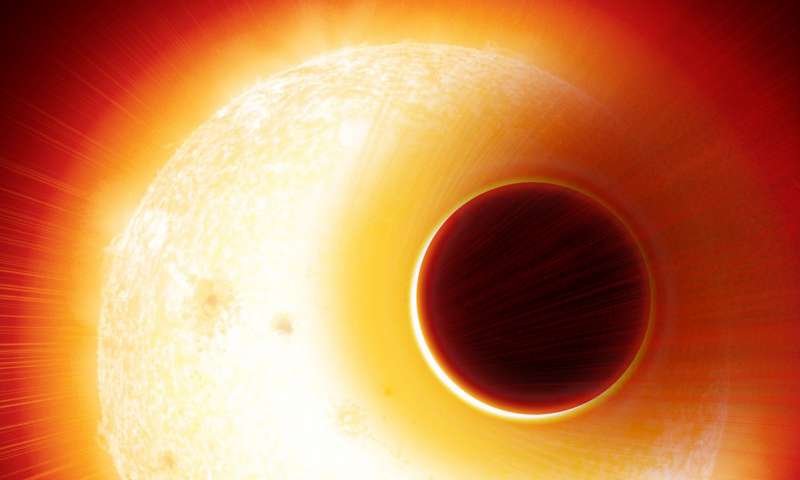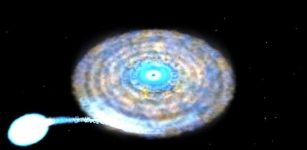Distant Exoplanet HAT-P-11b With Helium Filled Atmosphere In Cygnus Constellation
MessaegToEagle.com – Astronomers have discovered a distant planet with an abundance of helium in its atmosphere, which has swollen to resemble an inflated balloon.
The planet – HAT-P-11b – is located 124 light years from Earth and in the Cygnus constellation.
The remarkable breakthrough was led by researchers from the University of Geneva, who observed the exoplanet using the spectrograph called Carmenes, installed on the 4-metre telescope at Calar Alto, Spain.

For the first time, the data revealed the speed of helium atoms in the upper atmosphere of the exoplanet, which is equivalent in size to Neptune. The helium is in an extended cloud that is escaping from the planet, just as a helium balloon might escape from a person’s hand.
The research team believe that the ground-breaking study could open up new understandings of the extreme atmospheric conditions found around the hottest exoplanets.
“This is a really exciting discovery, particularly as helium was only detected in exoplanet atmospheres for the first time earlier this year. The observations show helium being blasted away from the planet by radiation from its host star,” Jessica Spake, part of Exeter’s Physics and Astronomy department said in a press release.
“Hopefully we can use this new study to learn what types of planets have large envelopes of hydrogen and helium, and how long they can hold the gases in their atmospheres.”
Helium was first detected as an unknown yellow spectral line signature in sunlight in 1868. Devon-based astronomer Norman Lockyer was the first to propose this line was due to a new element, and named it after the Greek Titan of the Sun, Helios. It has since been discovered to be one of the main constituents of the planets Jupiter and Saturn in our Solar System.
It is also the second most common element in the universe and was long- predicted to be one of the most readily-detectable gases on giant exoplanets.
Romain Allart, PhD student at the University of Geneva and first author of the study said: “We suspected that this proximity with the star could impact the atmosphere of this exoplanet. The new observations are so precise that the exoplanet atmosphere is undoubtly inflated by the stellar radiation and escapes to space.”
These new observations are supported by a state-of-the-art computer simulation, led by Vincent Bourrier, co-author of thestudy and member of the European project FOUR ACES, used to track the trajectory of helium atoms.
MessageToEagle.com










